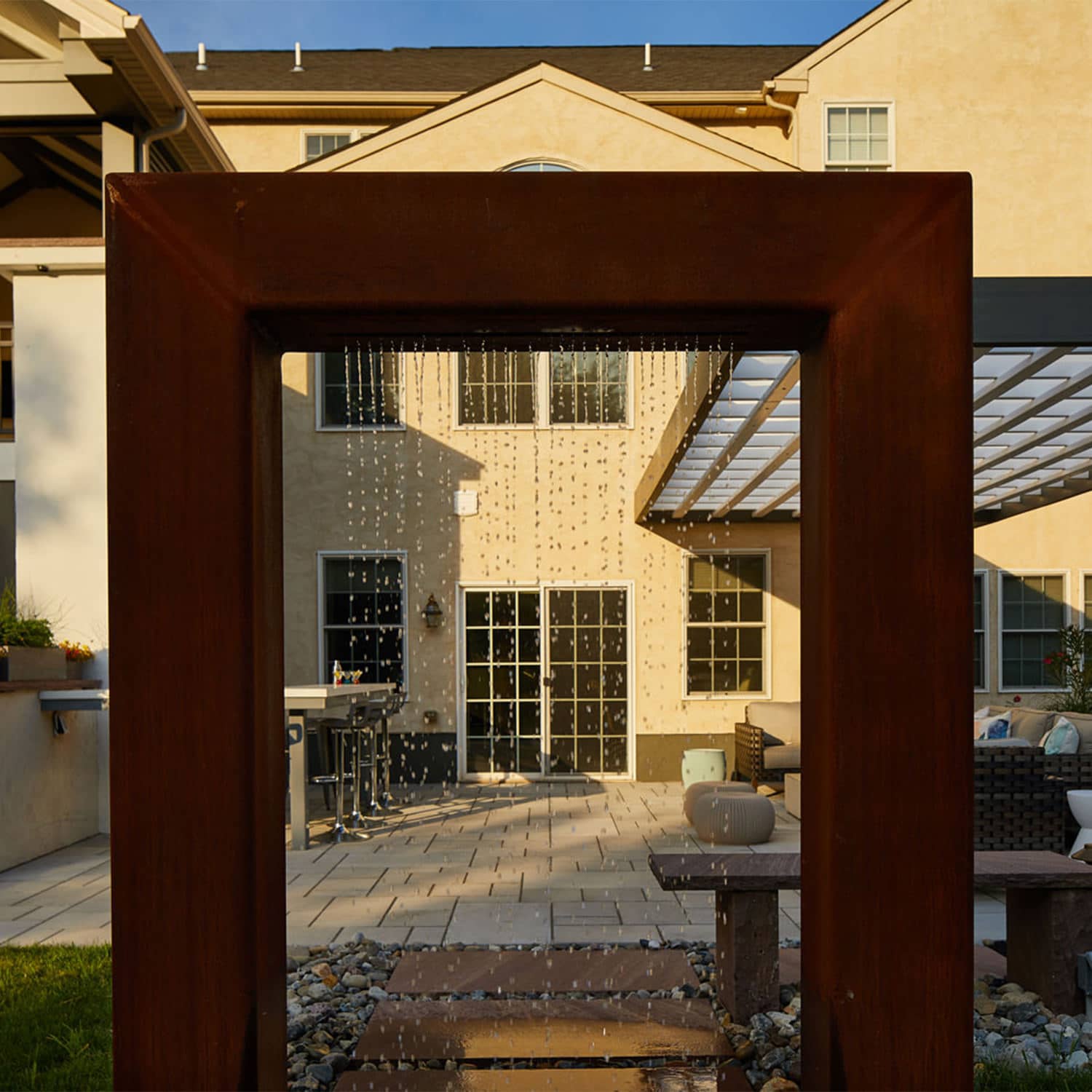Mulching is a great way to keep weeds down, reduce the need for water and supply nutrients to your shrubs, flowers and vegetables.
Mulch can be made from many different natural materials, including wood chips, pine needle and leaves, hay or straw, newspaper or cardboard.
Gardeners will debate over which is the best type of mulch. Wood chip mulch is aesthetically pleasing because it comes in different colors, from a natural wood tone to a sharp tawny red to classic black. The consistency of the color can give a professional look to your backyard landscape. It is also easy to buy from most garden centers, and easy to use.
Leaves make a great mulch, and are a popular choice, because they are free if you have trees on or near your property. (And it means something productive can come from all that time you spent raking leaves last fall!)
The best way to use leaves is shred them first with a mower, but if you can’t shred them, they will still work whole. You want to lay them down two to three inches thick, but no matter how thick you lay them, some weeds will still worm their way through. Some people prefer using a mixture of hay and leaves.
The Farmer’s Almanac recommends a technique called “sheet mulching.” This is where you lay cardboard down first, then cover it with leaves. You can also add a layer of compost between the cardboard and leaves to provide extra nutrients for your plants. When working with cardboard, make sure you’ve removed all the tape or plastic, and try to use cardboards that does not have ink on it. It should be a great weed block for at least a full season. Use just the leaves around base of your plants to make sure they get enough water and air.
No matter what kind of mulch you use, remove any weeds and use a rake to turn over any existing mulch first before laying new mulch down. Edge the flowers beds with the fresh mulch.
Corn gluten meal, a byproduct from corn milling, is a great natural herbicide you can use along with the mulch to keep weeds at bay. It is also available from most gardening centers.
Another great way to mulch your vegetable garden is to use a “living mulch” or “green manure,” according to the Farmers’ Almanac. This technique is also called “undersowing.”
The idea is you plant a “friendly” plant, like clover, alfalfa or vetch, around your already established vegetables to prevent weeds from growing. These plants are legumes, which are nitrogen fixers with soil-enhancing qualities. Around the time your principal crops, such as tomatoes, eggplants, broccoli, and squash, are established, sprinkle the legume seeds around the soil under the established crop and rake them in shallowly with your hand or a small tool. The little seedlings will begin to sprout, forming a lush green carpet underneath you plants. This living mulch has shallow roots that won’t compete with your vegetables. When your veggies are harvested, you will have an already planted cover crop for the winter. And when the next spring comes, you should turn the little plants over into your soil about a month before you plant next year’s crop. This will give the living mulch time to break down, and enrich the soil with nutrients. Once your seedlings are planted and established, you can start the process all over again.
Want more ideas for green gardening? Contact MasterPLAN Landscape Design & Installation. The best living room is the one outdoors.
Join Our Newsletter
Stay up to date with what is happening with MasterPLAN Outdoor Living.














